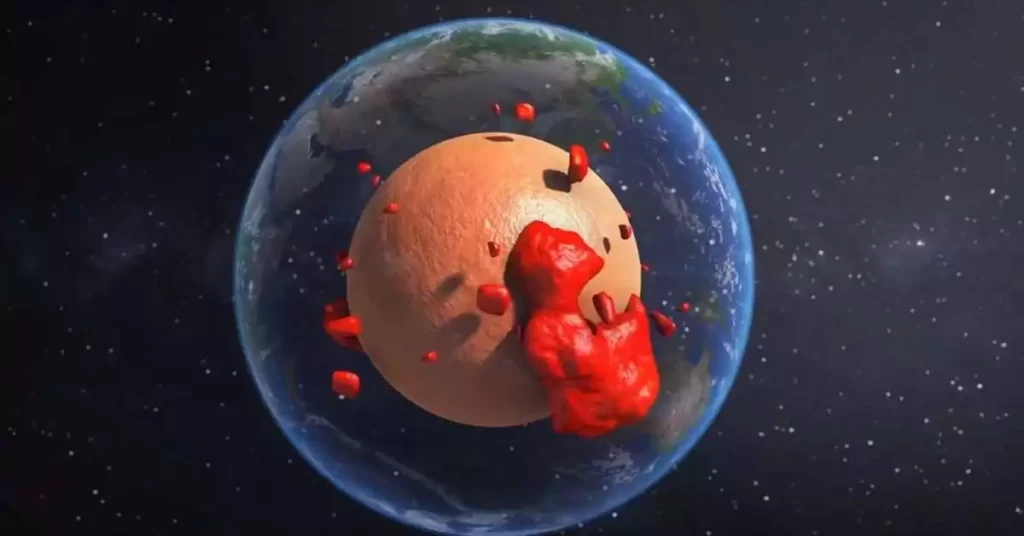In our pursuit of answers to life’s profound mysteries, we often cast our gaze toward the stars. However, the most intriguing enigmas may be concealed beneath our very feet.

One might assume that after years of exploration, we would have unraveled the Earth’s deepest secrets. Nevertheless, our planet’s core remains veiled in ambiguity.
Beneath the vast expanses of Africa and the Pacific Ocean, two colossal anomalies have been discovered, together occupying approximately six percent of the Earth’s total volume. Their composition and origin continue to elude us, presenting a captivating puzzle.
Various theories have surfaced, with some suggesting that these mysterious structures could be accumulations of oceanic crust that have formed over countless millennia. However, a more intriguing hypothesis speculates that they may be remnants of an ancient celestial body that collided with Earth some 4.5 billion years ago.
To comprehend the sheer magnitude of these enigmatic entities, consider the Tuzo structure under Africa, towering at approximately 800 kilometers (497 miles) in height. This is akin to stacking 90 Mount Everests on top of one another, as highlighted by IFLScience.
The challenge in ascertaining the origins of these colossal formations lies in the lack of direct methods to explore the Earth’s core. The deepest human excavation, famously dubbed the “entrance to hell,” reached a staggering depth of 12,263 meters (40,230 feet), barely scratching the surface of the Earth’s crust.
Our most effective tool for deciphering the Earth’s inner workings is seismic tomography. This technique examines how energy waves propagate during seismic events, offering insights into the different densities of rock and liquid beneath the Earth’s surface.
By analyzing tremors from various points on the Earth’s surface, geologists can deduce the materials through which these waves travel, effectively mapping the Earth’s interior. This technique led to the discovery of the two enigmatic structures known as Large Low Shear Velocity Provinces (LLSVPs).
These areas, often referred to as “blobs,” exhibit slower wave travel compared to the surrounding lower mantle, indicating distinct material composition. Although seismic tomography cannot pinpoint the exact nature of these materials, some scientists propose that they might be remnants of a celestial body called Theia, a concept known as the “giant impact hypothesis.”
According to this hypothesis, around 4.5 billion years ago, a Mars-sized object collided with Earth, not only shaping our present home but also ejecting enough debris to form the moon. Some speculate that Theia’s remnants may have settled near the Earth’s core, forming at least one of the two LLSVPs.
Despite decades of investigation, the true identity of these colossal blobs remains a mystery. Nonetheless, studies related to Theia offer crucial insights into how the hypothetical collision may have triggered fundamental plate tectonics and mantle movements within our planet, essential processes in shaping the world we inhabit.
This fascinating discovery serves as a reminder that there is still much to learn about our planet’s history and the origins of life as we know it.
ALSO READ: Unlocking the Secrets of Space: Rare Solar Eclipse Offers Unprecedented Scientific Insights
Revolutionary Laser Tech Reveals Moon’s Secret Roadway: Humanity’s Gateway to the Stars









